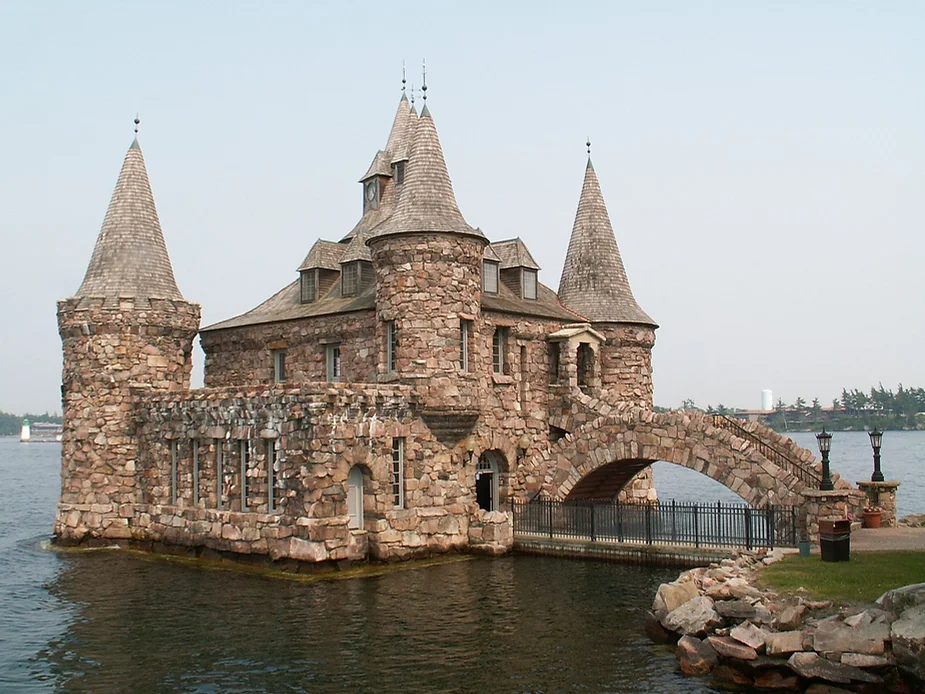Overview of Boldt Castle
- Location: Situated in the Thousand Islands region of New York, USA.
- Setting: Heart Island in the Saint Lawrence River.
- Availability: Open to visitors during summer months, from mid-May to mid-October.
- Historical Significance: Originally a private residence built by American millionaire George Boldt.
- Current Management: Maintained by the Thousand Islands Bridge Authority as a tourist attraction.
- Visual Documentation: Images available on Boldt Castle’s Facebook, Instagram, official website, and Wikipedia.
Historical Background
Origins and Construction
- Initiator: George C. Boldt, owner of the Waldorf Astoria Hotel in New York City.
- Purpose: Constructed as a grand gesture of love for his wife, Louise.
- Construction Period: Started in 1900; involved 300 workers including stonemasons and carpenters.
- Features: A six-story castle with 120 rooms, featuring tunnels, a powerhouse, Italian gardens, a drawbridge, and an alster tower (children’s playhouse).
Tragedy and Abandonment
- Catastrophic Event: Construction halted in 1904 after the sudden death of Louise Boldt.
- Aftermath: George Boldt never returned, leaving the castle as a monument to his love.
- Duration of Abandonment: The castle stood neglected for 73 years, facing natural and human threats.
Restoration and Preservation
- Acquisition: Purchased in 1977 by the Thousand Islands Bridge Authority.
- Restoration Investments: Millions of dollars have been invested since 1977 to rehabilitate and preserve the castle.
- Access: Accessible via ferry, private boat, or tour boat from multiple locations including New York and Ontario.
- Admission: A fee is charged, and free docking is available for boaters. U.S. Customs services are provided on-site for Canadian visitors.
Today’s View of the Castle
Interior Restoration
- First and Second Floors: Mostly furnished with modern décor.
- Basement: Unfinished but includes a pool, bowling lanes, and a pathway to the powerhouse.
- Upper Floors: Unfurnished, with exhibits showcasing regional history and artifacts from the Boldts’ era.
Additional Features
- Monumental Architecture: A fully restored triumphal arch planned by George Boldt is located at the island’s edge.
- Adaptability: The bridge connecting two parts of the island is designed to be raised or lowered if necessary.
Conclusion
Boldt Castle stands today not only as a monument to a tragic love story but also as a restored historic site that attracts numerous visitors each year. Its transformation from an abandoned castle to a preserved heritage site underscores the efforts to maintain cultural landmarks for future generations.
Before to/following the Great Hall

Grand Staircase

Gazebo

Upstairs Bedroom

Stained Glass Dome

Alster Tower

Power House

